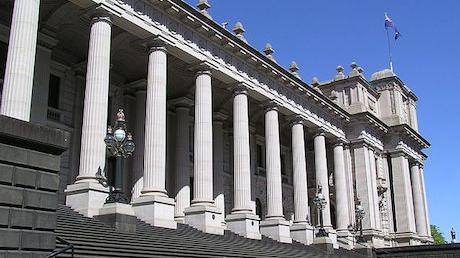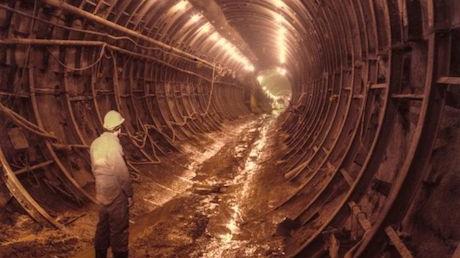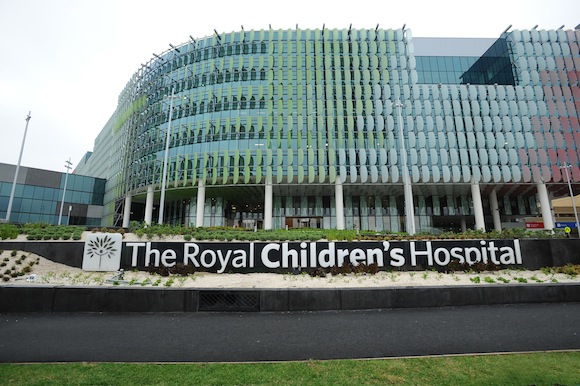Population and economic growth will require substantial future investment in transport, water, hospitals, schools and other infrastructure by future Victorian governments. It is important for future generations that funds are allocated to the more productive infrastructure investment options and that appropriate ways are found to finance infrastructure.
Current strategies adopted by the main political parties towards investment in infrastructure are little better than school kids screaming “my choices are bigger and better than yours”. More formal, explicit and public procedures for selecting the higher priority infrastructure investment options would result in a more productive and desirable future for all Victorians. Arguably, they also would contribute to greater respect for, and confidence in, politicians.
Limited resources mean that only some of the wish list of infrastructure ideas can be funded. How should we choose, for example, between the east-west road project, a north-south rail project, rail over-passes, better regional roads; or between the Hastings port proposal and an expanded Melbourne port; or between a new desalination plant or an east Gippsland dam and pipeline; and then between each of these different areas of infrastructure investment?
Most of the benefits of infrastructure investments accrue to future generations, and many projects generate additional future State Government revenues from user charges.
A general answer is that each project should be the subject of an independent, explicit and formal project analysis which is made available for public discussion (as argued by the Productivity Commission, 2014, and others). An assessment for each project would include: a clear definition of the problem(s) being addressed; the case for government involvement; a benefit-cost analysis of the benefits and costs to society; and, the time path of revenues and costs for the state government over the life of the investment. Projects, and variations of projects, then would be priority ranked by their benefit-cost ratio.
Clearly, all infrastructure investment assessments will be prepared under conditions of imperfect information. In many cases there can be legitimate alternative views about key measures of benefits and costs. As a result, in time, some projects will generate greater society net returns than anticipated, while others will be less successful.
Estimates based on alternative assumptions or scenarios may be desirable as tests of robustness (for example the Vertigan Report, 2014, assessment of different options for the national broadband network). Public circulation of each report, together with opportunities for community input and comment, should precede any government decision to proceed or not. Transparent and public assessments of major infrastructure investments will increase the probability that limited funds are allocated to those projects of most benefit to citizens.
The funding of investments in infrastructure should recognise that costs or outlays are made now with most of the benefits and returns coming in the future, often many decades ahead. In many cases, user fees for the additional services provided by the infrastructure, such as registration fees on motor vehicles, water charges and port fees, will fund repayment of the infrastructure investment.
An important component of the investment returns from Victorian Government infrastructure investments will be revealed as a more productive and larger future Australian economy. In turn, a larger economy generates higher future income tax receipts, and other taxation revenue, for the Commonwealth Government. These benefits provide a logical rationale for part commonwealth funding of state infrastructure investments.
Financially viable government infrastructure investments which also have a public and transparent project assessment could be funded with additional government borrowings and increases in debt.
Political debate frequently condemns parties for saddling future generations with debt incurred by today’s expensive promises. But where a project is appropriately and independently scrutinised and debated, such debt may be entirely appropriate. The generation which ultimately benefits from the project will use the future profits generated by the infrastructure investment to pay the debt interest and the borrowed funds.
Most of the benefits of infrastructure investments accrue to future generations, and many projects generate additional future State Government revenues from user charges. This would place government investments in the same framework as household investments in housing and business investments in plant and equipment, buildings and intellectual property. Future beneficiaries of valuable investments in government infrastructure repay the interest and the principle on borrowed funds to finance the initial investment outlay. Projects which pass a benefit-cost assessment and which are funded by debt will yield a net positive surplus for future generations and a minimal net burden on the current generation.
Professor John Freebairn holds the Ritchie Chair in economics at the University of Melbourne.





